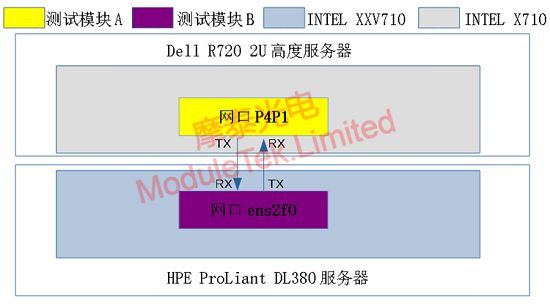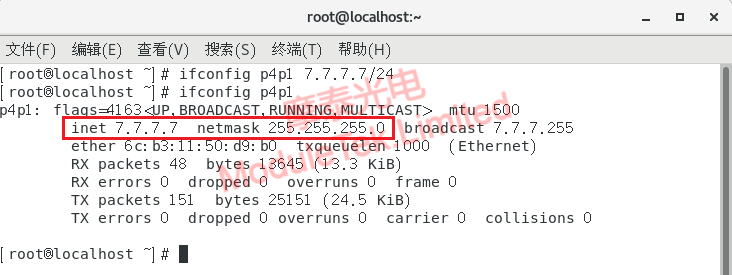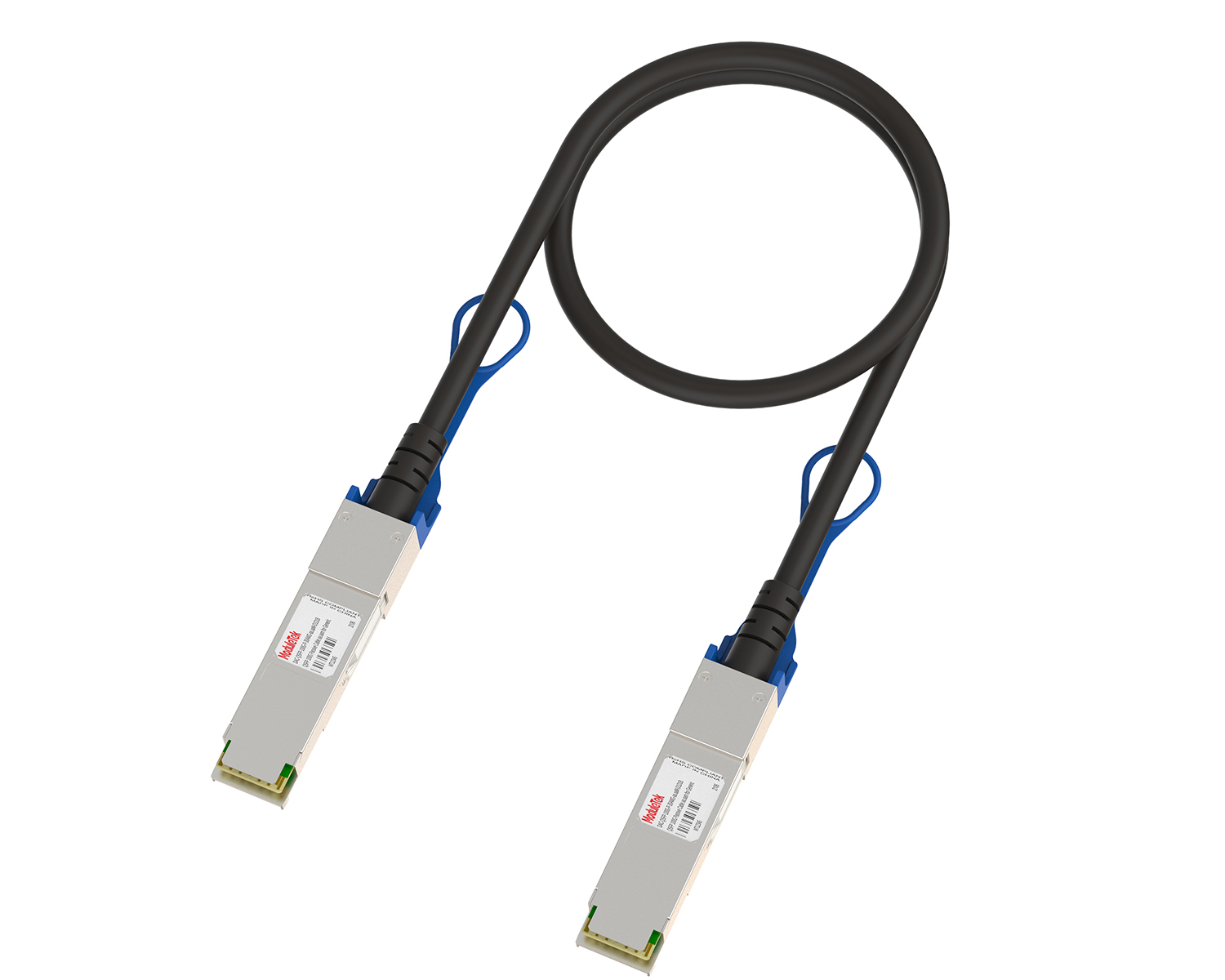Introduction to Iperf3 Bandwidth Testing
Time: 2024-03-13
1. Introduction to iperf3
Iperf3 is a common network performance testing tool that supports various parameters related to timing, buffers, protocols (TCP, UDP, SCTP with IPv4 and IPv6) for evaluating the performance of a network link in terms of transmission bandwidth, delay jitter, and packet loss.
2. iperf3 test environment
Test equipments: 2 servers; 2PCS of NICs; 2PCS of optical modules; 1 dual-core patch cable;
Connect according to the following network topology diagram:

Figure 1 iPerf3 test simple topology
3. iperf3 test software
Download address: https://iperf.fr/iperf-download.php , the installation of this choice Centos system 64bits, download the file name for iperf3-3.1.3-1.fc24.x86_64.rpm.
Enter the command "rpm -ivh filename" in the server terminal to install the iperf tool.

Figure 2 iPerf3 Software Installation
4. iperf3 test method
a. On the Dell R720 2U server, insert one module into the INTEL XXV710 port p4p1, and on the HPE ProLiant DL380 server, insert the other module into the INTEL X710 port ens2f0, use a short jumper cable to connect the two modules together, and then turn on the server terminal when the NIC indicator light is on, i.e., after the module is LINKed.
b. Open the terminal on the Dell R720 2U server, configure the p4p1 ip to 7.7.7.7 255.255.255.0 and check.

Figure 3 iPerf3 configuring p4p1 IP
c. Open a terminal on the HPE ProLiant DL380 server, configure ens2f0 ip as 7.7.7.8 255.255.255.255.0 and view it.

Figure 4 iPerf3 configuring ens2f0 IP
d. Turn off the firewall and restart network management to make the configuration ip take effect.

Figure 5 Reboot the device to make the IP take effect
e. Run the iperf3 server on the Dell R720 2U server.

Figure 6 Run the server
f. Run the iperf3 client on the HPE ProLiant DL380 server and observe the traffic/bandwidth test results, as shown in the following figure.

Figure 7 SFP-10G-SR-C-D11 module bandwidth test on NICs
When the optical module is applied on the server, it works in the physical layer and carries out the photoelectric conversion and transmission of transparent "0" and "1" signals, which generally does not affect the fluctuation of the test bandwidth during the iPerf3 test.
When using optical modules for iPerf3 traffic testing, due to CPU hardware limitations, it is generally not possible to achieve 100% of the target bandwidth, as shown in Figure 7 above (the optical module supports bandwidth of 10Gbits/sec, the actual test in the current server hardware can only reach about 9.4Gbits/sec).
Moduletek Limited is at your service!
If you have any questions about the above content, you can contact us by Email : web@moduletek.com

 40G/100G Optical Transceivers
40G/100G Optical Transceivers 10G/25G Optical Transceivers
10G/25G Optical Transceivers 155M/622M/2.5G Optical Transceivers
155M/622M/2.5G Optical Transceivers 100M/1G Optical Transceivers
100M/1G Optical Transceivers FC 16G/32G Optical Transceivers
FC 16G/32G Optical Transceivers CWDM/DWDM Optical Transceivers
CWDM/DWDM Optical Transceivers 100M/1G/10G Coppers
100M/1G/10G Coppers Active Cable AOC
Active Cable AOC Direct Attach Cable DAC
Direct Attach Cable DAC Regular/MTP-MPO Fiber Patch Cords
Regular/MTP-MPO Fiber Patch Cords MT2011
MT2011 MT2010
MT2010 CodingBox
CodingBox






